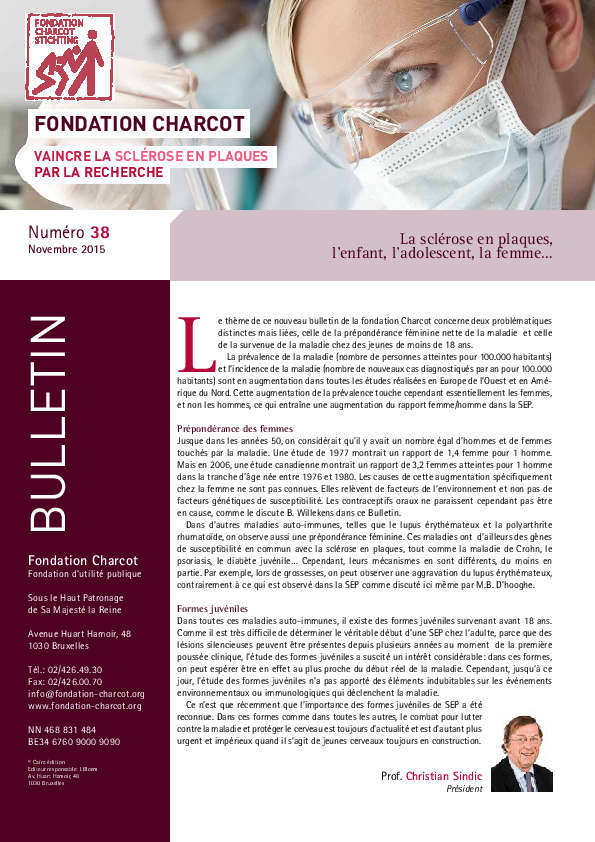Specific increase in women
According to all studies performed in Western Europe and North America, the prevalence (number of patients per 100,000 inhabitants) and incidence (number of new cases diagnosed each year per 100,000 inhabitants) of the disease are increasing. The increase in prevalence mainly concerns women rather than men, which has caused the women-to-men ratio of MS patients to increase. Until the 1950s, it was considered that about the same number of men and women were affected. A 1977 study yielded a ratio of 1.4 women to each man. However, a Canadian study performed in 2006 revealed a ratio of 3.2 women to 1 man in the group born between 1976 and 1980. The causes of this specific increase in women remain unknown, but can be ascribed to environmental rather than hereditary factors. It would appear nevertheless that oral contraception is not a factor, as discussed by B. Willekens in this issue.
In other auto-immune diseases such as lupus erythematosus and rheumatoid arthritis, female patients are also preponderant. Indeed, these diseases share susceptibility genes with multiple sclerosis as well as Crohn’s disease, psoriasis and juvenile diabetes. However, their mechanisms are different, at least in part. For instance, during pregnancy, lupus erythematosus tends to be aggravated, unlike MS, as also discussed in this issue by M.B. D’hooghe.
Juvenile forms
All these auto-immune diseases have juvenile forms which manifest before the age of 18. As it is very difficult to determine the inception of MS in adults – silent lesions may have been present for several years prior to the initial clinical flare-up –, the study of the juvenile forms has generated considerable interest: in these forms, it is hoped, researchers may have a better chance of approaching the true beginning of MS. However, at this point in time, the study of the juvenile forms has not yielded indubitable elements concerning the environmental or immunological factors that trigger the disease.
Only recently has the importance of the juvenile forms of MS been acknowledged. In this form, as in all others, the need to combat the disease and protect the brain remains foremost, all the more urgently as these are young, still developing brains.
More information

